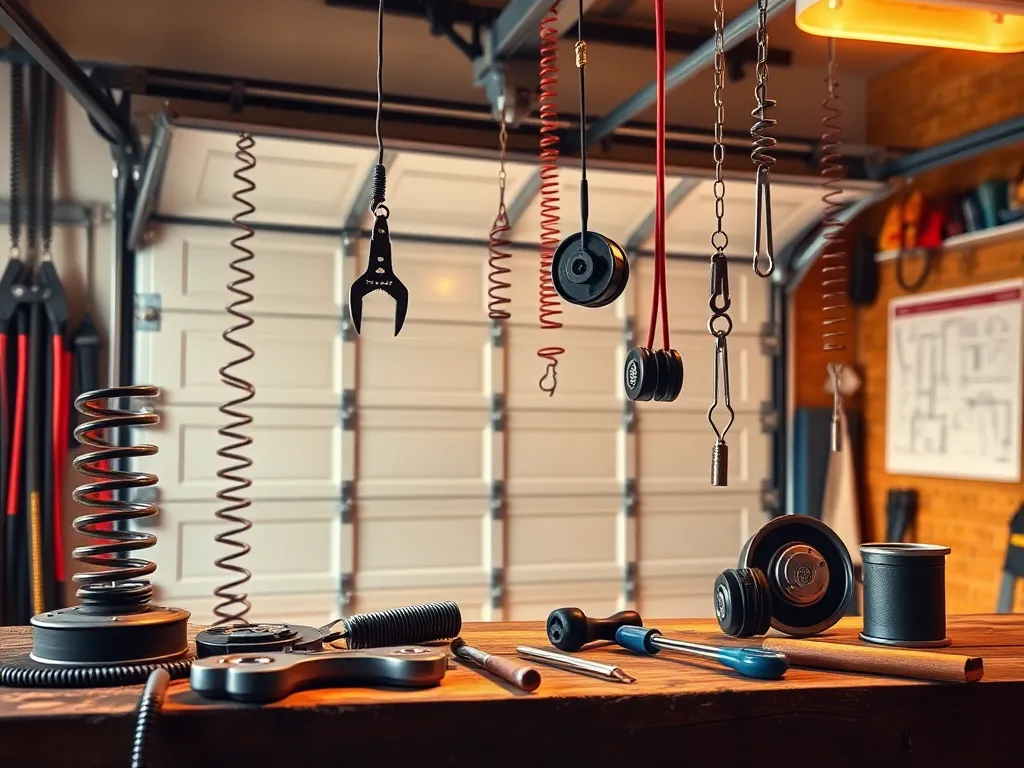Master Your Garage Door: Step-by-Step Guide to Balancing Tension

The Ultimate Guide to Garage Door Maintenance
Garage door maintenance is essential for ensuring the longevity and functionality of your garage door system. Regular upkeep can help prevent unexpected breakdowns, enhance safety, and improve the overall performance of your garage door.
understanding the spring adjustment process enables homeowners to ensure safety and efficiency in their garage door operations.
One of the critical aspects of garage door maintenance is inspecting the components for wear and tear. This includes checking the springs, cables, rollers, and tracks. By being proactive and performing these inspections regularly, you can identify potential issues before they become significant problems that require costly repairs.
Another important aspect of garage door maintenance includes proper lubrication of moving parts. Using the right type of lubricant can not only keep your garage door operating smoothly but also extend the life of various components, such as hinges and rollers. Keeping these parts lubricated will reduce friction, preventing them from bending or breaking due to wear over time.
regular tension measurement is essential for maintaining the longevity and functionality of your garage door system throughout the years.
Safety should never be overlooked during garage door maintenance. Make sure to test the door's auto-reverse mechanism regularly, which prevents accidents by reversing the door's direction if an object is detected in its path. Keeping the sensors clean and free of obstructions is also vital for the proper functioning of this safety feature.
Lastly, always be vigilant for any unusual noises or changes in operation. Odd sounds or sluggish movement can be indicative of underlying issues that require immediate attention. Being attentive to your garage door’s behavior can save you from larger problems down the line.
Understanding Garage Door Tension
Garage door tension refers to the amount of force exerted by the springs in your garage door system. Proper tension is crucial for balanced door operation, which affects how easily the door opens and closes, and prevents damage to the door mechanism.
following the balance testing steps can significantly enhance your garage door's performance while reducing unwanted noise during operation.
When the tension is inconsistent, it can lead to uneven door movement, which causes strain on the hinges and tracks. Proper tension allows for smooth operation, making the door easy to lift and lower without excessive force.
Improper tension can pose safety risks, as an unbalanced door might fall unexpectedly. This can potentially cause injury or damage to vehicles and nearby objects, underlining the importance of maintaining correct tension levels in your garage door system.
Tools Needed for Balancing Garage Door Tension
To properly maintain and adjust the tension on your garage door, you'll need some essential tools. These typically include a wrench, a ratchet set, and a ladder for reaching high places. It's instrumental to have the proper tools on hand to ensure that adjustments can be carried out safely and effectively.
In addition to tools, wearing safety gear like gloves and goggles is crucial during garage door maintenance. These items will protect you from sharp edges and flying debris, especially when handling heavy materials like springs.
There are a variety of recommended products available that can simplify DIY repairs and maintenance. Look for specialized garage door lubricants and tension adjustment tools that can provide assistance for balancing and fine-tuning your garage door's functionality.
Step-by-Step Process for Balancing Tension
Start the process by conducting an initial assessment of the door's tension. Open the door halfway and release it. If the door stays in place, the tension is generally balanced. If it falls or rises, adjustments will be needed.
To adjust the spring tension correctly, use a ratchet to loosen or tighten the tension on the springs, depending on whether the door needs more or less tension. Make small adjustments and retest the door after each adjustment to avoid over-tensioning.
Once adjustments have been made, test the door thoroughly by opening and closing it several times. Ensure it operates smoothly without any strange sounds or jerking movements, indicative of successful tension balancing.
Common Issues with Garage Door Tension
Signs of unbalanced garage doors include difficulty opening or closing the door, uneven gaps along the door edges, or the door feeling excessively heavy or light. These indicators should prompt immediate attention to prevent further complications.
Problems caused by incorrect tension can lead to damage such as broken springs, bent tracks, or even complete door failure. Over time, the wear and tear on components can become extensive and costly to repair.
Preventative measures for tension issues include regularly checking the cables and springs for any signs of wear, adjusting the tension periodically, and performing routine maintenance checks to catch potential issues early.
When to Seek Professional Help
If you identify complex issues beyond DIY fixes, such as broken cables or malfunctioning openers, it may be time to call a professional. Some repairs require specialized tools or expertise that could pose safety risks if tackled alone.
When choosing a garage door technician, look for licensed and insured professionals with positive reviews. A qualified technician will not only fix the immediate issue but also provide suggestions for maintaining your garage door going forward.
Cost considerations for professional assistance vary depending on the nature of the repairs needed. It’s often worth the investment to hire a professional for significant repairs rather than attempting risky DIY fixes that could escalate the issue.
